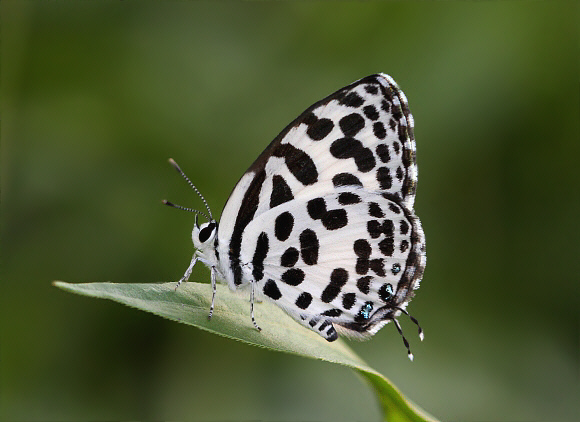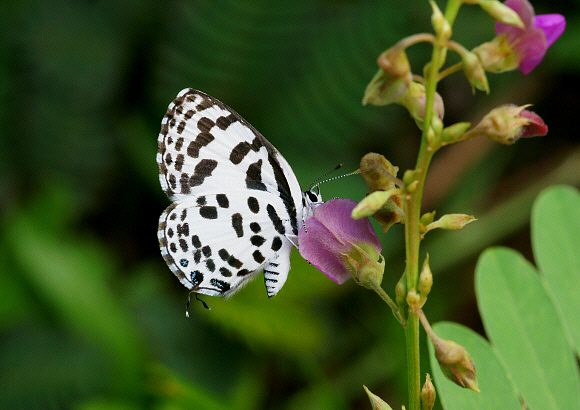
Introduction
There are 5 species in the genus Castalius, distributed variously from India to Malaysia, Sumatra, Borneo and Sulawesi. A number of additional species found in Africa have now been moved from Castalius into Tuxentius and Zintha.
The black spots on the underside of rosimon vary in size. They are generally smaller in dry season forms, in which the dark bar at the end of the discal cell is often disconnected from the costa.
Castalius rosimon is found from India and Sri Lanka to Thailand, West Malaysia, Sumatra, Borneo, the Philippines, Sulawesi, Java, Bali and Timor.

Habitats
This is a common species found in forest glades, open habitats including forest edges and clearings, open dry woodland, and flowery gardens. It can be found at elevations between sea level and about 1000m.
Lifecycle
The larval foodplants include Zizyphus and Paliurus ( Rhamnaceae ).
Adult behaviour
The butterflies are usually seen singly, or in two’s and three’s. They have an extremely rapid and acrobatic flight, dashing nervously back and forth from flowers to the tops of tall bushes and back again with amazing speed, and showing great apparent indecision about where they will eventually settle. In sunny conditions they nectar at Tridax and other low growing flowers, holding their wings erect. In the late afternoon they settle to roost on low herbage. In warm overcast or hazy weather they commonly bask with their wings held half open.
